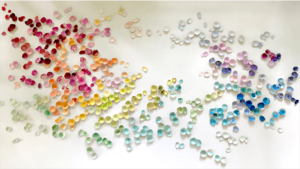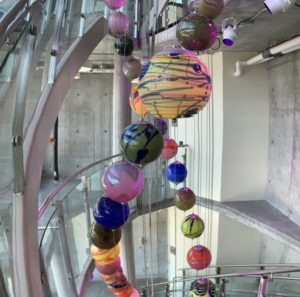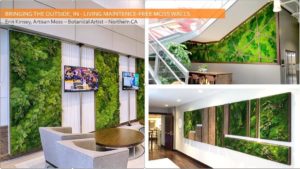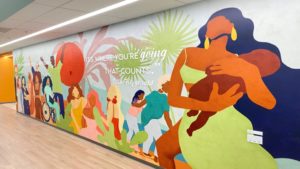Kira Stewart | Principal Art Consulting Services
Over the past year, those of us who are fortunate enough to serve major healthcare organizations have seen our clients and the entire healthcare industry challenged in ways no one had ever fully imagined.
The need to safely connect patients with providers thrust telehealth and technology-based platforms forward out of necessity, and both providers and patients have had to adapt dramatically and quickly.
As a healthcare-focused art consulting firm serving six major healthcare organizations throughout California and Colorado, we fully expected at the onset of the pandemic to be facing potentially catastrophic consequences to our firm. It seemed a foregone conclusion that with the need to respond to the pandemic, the very last thing our clients would have the bandwidth for would be their need for artwork. We couldn’t have been more wrong.

Artwork installations conducted during the pandemic have resulted in owners and project managers effusively praising the feedback they’re receiving from administrators, staff and providers, and staff reporting anecdotally how the artwork is impacting the patient experience and the overall excitement at the project outcome. In a recently opened behavioral health space that also served a large LGBQ young adult population, the feedback on the metaphorical broken eggshells art commission, where the eggshells were painted and mended using the ancient Japanese art of Kintsugi, in a rainbow array as a nod to the LGBT community, was met with overwhelming enthusiasm.
“The more things change, the more they stay the same” applies here, and speaks to how vital it is to remember that in the pursuit of new ideas and solutions in the built environment, artwork that is integrated with architecture and planned early and well can be one of the most significant parts of how patients will experience the space. (This is only true, however, when the art is in a space where the countless lighting, way-finding, construction, interiors and architectural details have been done with excellence. Fortunately, healthcare clients typically demand and get the very best of all of these disciplines.)
When the patients who have been avoiding or postponing live medical visits do finally venture back to a brick-and-mortar clinical space, whether out-patient or hospital, the overall experience of that space now, more than ever, needs to be truly wonderful.
Art, done to its potential, has been proven to impact branding, public relations, patient experience, staff morale, design decisions, and overall project outcomes, so adding the art consultant to the project team early helps inspire the team to plan moments of surprise and delight, and successfully specify the necessary lighting, backing, ceiling supports, signage coordination, etc. to support the ideas.

The interface of technology and art is creating more interactive opportunities than ever inside spaces, but architects and thought leaders in some of the largest medical centers on the West Coast with whom I have spoken are still hesitant, because of the maintenance risks and costs, and the already overloaded screen and technology-heavy environment that we are all navigating. That being said, art married to science and electricity can be awe-inspiring.
Biophilic considerations are more important than ever.  Showcasing patient and staff art humanizes spaces and begins building bridges between providers and patients. I’m always surprised at how a student art gallery inside the building becomes everyone’s favorite piece to talk about and go see.
Showcasing patient and staff art humanizes spaces and begins building bridges between providers and patients. I’m always surprised at how a student art gallery inside the building becomes everyone’s favorite piece to talk about and go see.
Challenging ourselves to dramatically rethink how we are including or n ot including diversity in artwork collections and planning means we are doing outreach and recruiting in ways we have never done it before. A newer question we’re challenging our projects with is “can every patient see themselves somehow in the art and the space? Do they enter the space and think “this is a place for people like me, I’m not alone, I belong here”?
ot including diversity in artwork collections and planning means we are doing outreach and recruiting in ways we have never done it before. A newer question we’re challenging our projects with is “can every patient see themselves somehow in the art and the space? Do they enter the space and think “this is a place for people like me, I’m not alone, I belong here”?
2020 brought immeasurable challenges and with it a lot of opportunities. In 2021 my goal as a firm principal is to embrace the lessons our firm and our team have learned, as professionals and as human beings, and continue to develop artwork that matters.
Everyone in healthcare needs moments of whimsy, laughter, inspiration and beauty, now more than ever. So it appears that art is, indeed, a project priority, because staff and patient experience is a top priority, and we are all still very, very human in how we respond to the environment around us.
